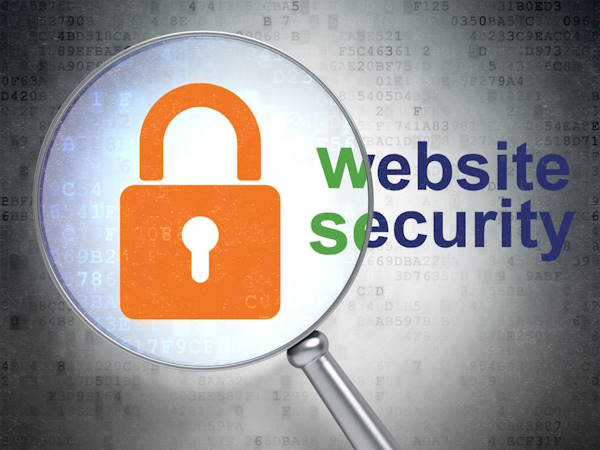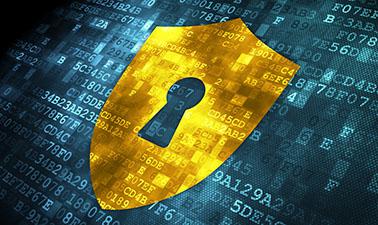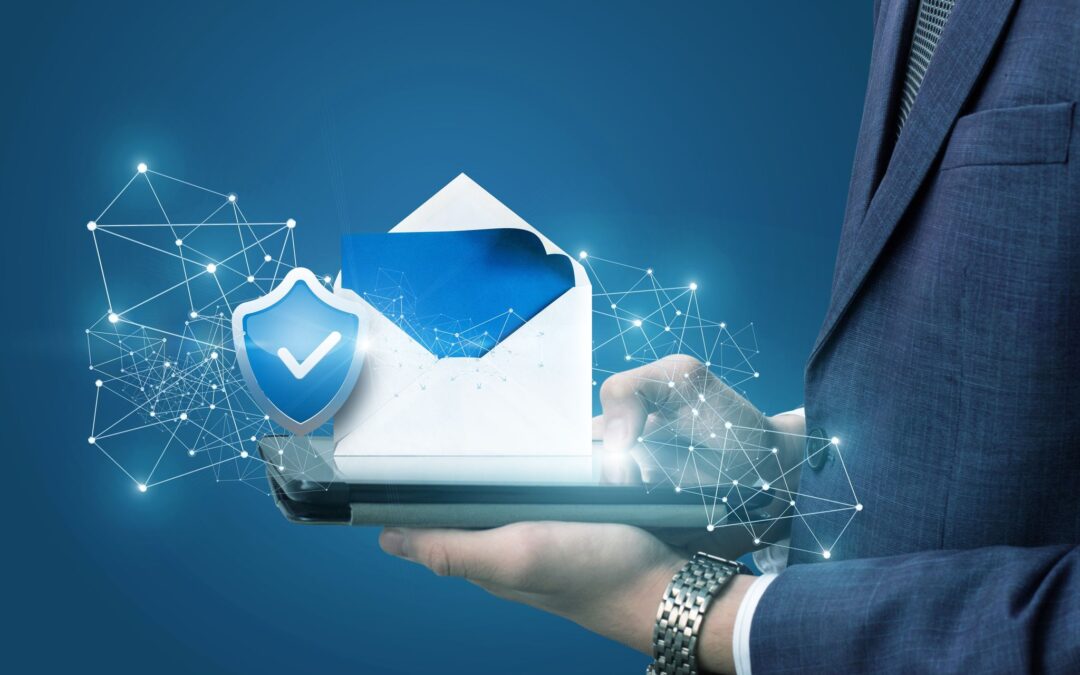
Decoding Cyber Insurance: What Policies Really Cover (and What They Don’t)
For small businesses navigating an increasingly digital world, cyber threats aren’t just an abstract worry, they’re a daily reality. Whether it’s phishing scams, ransomware attacks, or accidental data leaks, the financial and reputational damage can be severe. That’s why more companies are turning to cyber insurance to mitigate the risks.
Not all cyber insurance policies are created equal. Many business owners believe they’re covered, only to find out (too late) that their policy has major gaps. In this blog post, we will break down exactly what’s usually covered, what’s not, and how to choose the right cyber insurance policy for your business.
Why Is Cyber Insurance More Crucial Than Ever?
You don’t need to be a large corporation to become a target for hackers. In fact, small businesses are increasingly vulnerable. According to the 2023 IBM Cost of a Data Breach Report, 43% of all cyberattacks now target small to mid-sized businesses. The financial fallout from a breach can be staggering, with the average cost for smaller businesses reaching $2.98 million. That can be a substantial blow for any growing company.
Moreover, today’s customers expect businesses to protect their personal data, while regulators are cracking down on data privacy violations. A good cyber insurance policy helps cover the cost of a breach but also ensures compliance with regulations like GDPR, CCPA, or HIPAA, which makes it a critical safety net.
What Cyber Insurance Typically Covers
A comprehensive cyber insurance policy is crucial in protecting your business from the financial fallout of a cyber incident. It offers two main types of coverage: first-party coverage and third-party liability coverage. Both provide different forms of protection based on your business’s unique needs and the type of incident you’re facing. Below, we break down each type and the specific coverages they typically include.
First-Party Coverage
First-party coverage is designed to protect your business directly when you experience a cyberattack or breach. This type of coverage helps your business recover financially from the immediate costs associated with the attack.
Breach Response Costs
One of the first areas that first-party coverage addresses is the cost of managing a breach. After a cyberattack, you’ll likely need to:
- Investigate how the breach happened and what was affected
- Get legal advice to stay compliant with laws and reporting rules
- Inform any customers whose data was exposed
- Offer credit monitoring if personal details were stolen
Business Interruption
Cyberattacks that cause network downtime or disrupt business operations can result in significant revenue loss. Business interruption coverage helps mitigate the financial impact by compensating for lost income during downtime. It allows you to focus on recovery without worrying about day-to-day cash flow.
Cyber Extortion and Ransomware
Ransomware attacks are on the rise, and they can paralyze your business by locking up essential data. Cyber extortion coverage is designed to help businesses navigate these situations by covering:
- The cost of paying a ransom to cyber attackers.
- Hiring of professionals to negotiate with hackers to lower the ransom and recover data.
- The costs to restore access to files that were encrypted in the attack.
Data Restoration
A major cyber incident can result in the loss or damage of critical business data. Data restoration coverage ensures that your business can recover data, whether through backup systems or through a data recovery service. This helps minimize disruption and keeps your business running smoothly.
Reputation Management
In the aftermath of a cyberattack, it’s crucial to rebuild the trust of customers, partners, and investors. Many policies now include reputation management as part of their coverage. This often includes:
- Hiring Public Relations (PR firms) to manage crisis communication, create statements, and mitigate any potential damage to your business’s reputation.
- Guidance on how to communicate with affected customers and stakeholders to maintain transparency.
Third-Party Liability Coverage
Third-party liability coverage helps protect your business from claims made by external parties (such as customers, vendors, or partners) who are affected by your cyber incident. When a breach or attack impacts those outside your company, this coverage steps in to defend you financially and legally.
Privacy Liability
This coverage protects your business if sensitive customer data is lost, stolen, or exposed in a breach. It typically includes:
- Coverage for legal costs if you’re sued for mishandling personal data.
- It may also cover costs if a third party suffers losses due to your data breach.
Regulatory Defense
Cyber incidents often come under the scrutiny of regulatory bodies, such as the Federal Trade Commission (FTC) or other industry-specific regulators. If your business is investigated or fined for violating data protection laws, regulatory defense coverage can help with:
- Coverage may help pay for fines or penalties imposed by a regulator for non-compliance.
- Mitigating the costs of defending your business against regulatory actions, which can be considerable.
Media Liability
If your business is involved in a cyberattack that results in online defamation, copyright infringement, or the exposure of sensitive content (such as trade secrets), media liability coverage helps protect you. It covers:
- Defamation Claims – If a data breach leads to defamatory statements or online reputational damage, this policy helps cover the legal costs of defending the claims.
- Infringement Cases – If a cyberattack leads to intellectual property violations, media liability coverage provides the financial resources to address infringement claims.
Defense and Settlement Costs
If your company is sued following a data breach or cyberattack, third-party liability coverage can help cover legal defense costs. This can include:
- Paying for attorney fees in a data breach lawsuit.
- Covering settlement or judgment costs if your company is found liable.
Optional Riders and Custom Coverage
Cyber insurance policies often allow businesses to add extra coverage based on their specific needs or threats. These optional riders can offer more tailored protection for unique risks your business might face.
Social Engineering Fraud
One of the most common types of cyber fraud today is social engineering fraud, which involves phishing attacks or other deceptive tactics designed to trick employees into revealing sensitive information, transferring funds, or giving access to internal systems. Social engineering fraud coverage helps protect against:
- Financial losses if an employee is tricked by a phishing scam.
- Financial losses through fraudulent transfers by attackers.
Hardware “Bricking”
Some cyberattacks cause physical damage to business devices, rendering them useless, a scenario known as “bricking.” This rider covers the costs associated with replacing or repairing devices that have been permanently damaged by a cyberattack.
Technology Errors and Omissions (E&O)
This type of coverage is especially important for technology service providers, such as IT firms or software developers. Technology E&O protects businesses against claims resulting from errors or failures in the technology they provide.
What Cyber Insurance Often Doesn’t Cover
Understanding what’s excluded from a cyber insurance policy is just as important as knowing what’s included. Here are common gaps that small business owners often miss, leaving them exposed to certain risks.
Negligence and Poor Cyber Hygiene
Many insurance policies have strict clauses regarding the state of your business’s cybersecurity. If your company fails to implement basic cybersecurity practices, such as using firewalls, Multi-Factor Authentication (MFA), or keeping software up-to-date, your claim could be denied.
Pro Tip: Insurers increasingly require proof of good cyber hygiene before issuing a policy. Be prepared to show that you’ve conducted employee training, vulnerability testing, and other proactive security measures.
Known or Ongoing Incidents
Cyber insurance doesn’t cover cyber incidents that were already in progress before your policy was activated. For example, if a data breach or attack began before your coverage started, the insurer won’t pay for damages related to those events. Likewise, if you knew about a vulnerability but failed to fix it, your insurer could deny the claim.
Pro Tip: Always ensure your systems are secure before purchasing insurance, and immediately address any known vulnerabilities.
Acts of War or State-Sponsored Attacks
In the wake of high-profile cyberattacks like the NotPetya ransomware incident, many insurers now include a “war exclusion” clause. This means that if a cyberattack is attributed to a nation-state or government-backed actors, your policy might not cover the damage. Such attacks are often considered acts of war, outside the scope of commercial cyber insurance.
Pro Tip: Stay informed about such clauses and be sure to check your policy’s terms.
Insider Threats
Cyber insurance typically doesn’t cover malicious actions taken by your own employees or contractors unless your policy specifically includes “insider threat” protection. This can be a significant blind spot, as internal actors often cause severe damage.
Pro Tip: If you’re concerned about potential insider threats, discuss specific coverage options with your broker to ensure your policy includes protections against intentional damage from insiders.
Reputational Harm or Future Lost Business
While many cyber insurance policies may offer PR crisis management services, they usually don’t cover the long-term reputational damage or future business losses that can result from a cyberattack. The fallout from a breach, such as lost customers or declining sales due to trust issues, often falls outside the realm of coverage.
Pro Tip: If your business is especially concerned about brand reputation, consider investing in additional coverage or crisis management services. Reputational harm can have far-reaching consequences that extend well beyond the immediate financial losses of an attack.
How to Choose the Right Cyber Insurance Policy
As cyber threats continue to evolve, so too must your business’s protection. The right policy can be a lifesaver in the event of a breach, but not all policies are created equal. When selecting a cyber insurance policy, it’s important to understand what your business needs and to choose a policy that specifically addresses your risks. Let’s break down the steps to ensure you’re selecting the best coverage for your organization.
Assess Your Business Risk
Start by evaluating your exposure:
- What types of data do you store? Customer, financial, and health data, all require different levels of protection.
- How reliant are you on digital tools or cloud platforms? If your business is heavily dependent on technology, you may need more extensive coverage for system failures or data breaches.
- Do third-party vendors have access to your systems? Vendors can be a potential weak point. Ensure they’re covered under your policy as well.
Your answers will highlight the areas that need the most protection.
Ask the Right Questions
Before signing a policy, ask:
- Does this cover ransomware and social engineering fraud? These are growing threats that many businesses face, so it’s crucial to have specific coverage for these attacks.
- Are legal fees and regulatory penalties included? If your business faces a legal battle or must pay fines for a breach, you’ll want coverage for these costly expenses.
- What’s excluded and when? Understand the fine print to avoid surprises if you file a claim.
Get a Second Opinion
Don’t go it alone. Work with a cybersecurity expert or broker who understands both the technical and legal aspects of cyber risk. They’ll help you navigate the complexities of the policy language and identify any gaps in coverage. Having a pro on your side can ensure you’re adequately protected and help you make the best decision for your business.
Consider the Coverage Limits and Deductibles
Cyber insurance policies come with specific coverage limits and deductibles. Ensure that the coverage limit aligns with your business’s potential risks. For example, if a data breach could cost your business millions, make sure your policy limit reflects that. Similarly, check the deductible amounts, these are the costs you’ll pay out of pocket before insurance kicks in. Choose a deductible that your business can afford in case of an incident.
Review Policy Renewal Terms and Adjustments
Cyber risk is constantly evolving. A policy that covers you today may not cover emerging threats tomorrow. Check the terms for policy renewal and adjustments. Does your insurer offer periodic reviews to ensure your coverage stays relevant? Ensure you can adjust your coverage limits and terms as your business grows and as cyber threats evolve. It’s important that your policy evolves with your business needs.
Cyber insurance is a smart move for any small business. But only if you understand what you’re buying. Knowing the difference between what’s covered and what’s not could mean the difference between a smooth recovery and a total shutdown.
Take the time to assess your risks, read the fine print, and ask the right questions. Combine insurance coverage with strong cybersecurity practices, and you’ll be well-equipped to handle whatever the digital world throws your way. Do you want help decoding your policy or implementing best practices like MFA and risk assessments? Get in touch with us today and take the first step toward a more secure future.
—
This Article has been Republished with Permission from The Technology Press.










Recent Comments